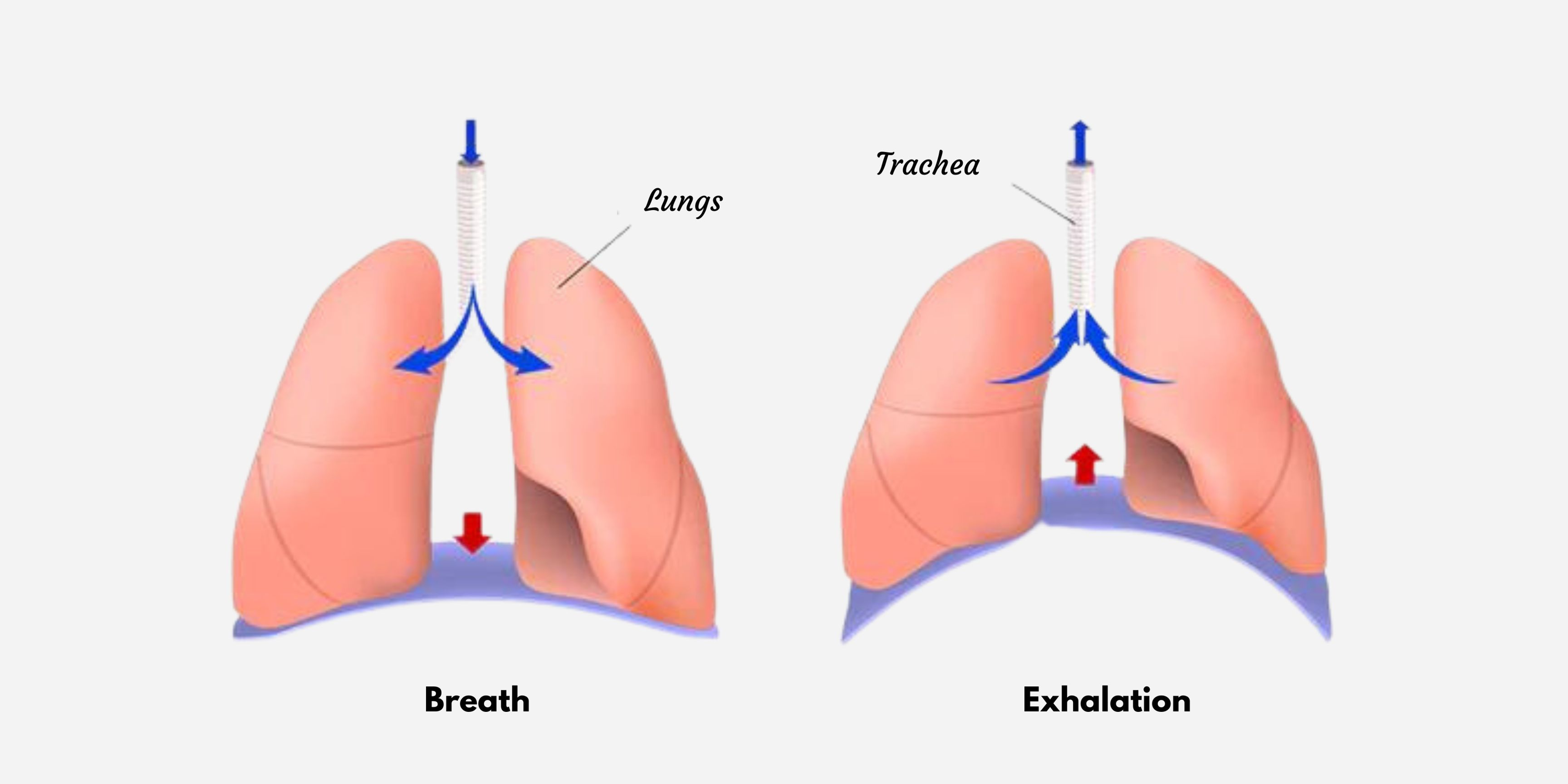
Learn Everything About Diaphragm Functions and Development
0 Comments
Diaphragm Development
June 11, 2023

"Mr. A has had an injury to his diaphragm -- inability to function properly --adversely affecting his breathing. There is no established medical treatment for this condition and patient has been encouraged to seek any and all alternative treatment modalities."
From an enlightened medical doctor.
Partly good advice but yikes on the many sources of mediocre to bad information that are out in the world these days.
If you think you have some kind of illness, I caution you against self-diagnosis or self-treatment. There are numerous health conditions sometimes associated with respiratory muscle weakness, as outlined on page 1891 of The Thorax, by Charis Roussos.
He missed sleep apnea.
I suspect he missed a few more.
The diaphragm is the central muscle of the human body, the principal muscle of your breathing. It almost completely separates the body in half from top to bottom. Ancient Greece called the diaphragm phrenos, "the unity of all possibilities of human expression."
The diaphragm shrinks, and as it shrinks, it will rise less and less up into the chest. Liken it to a bicycle pump. If you pull the handle out just a little, you get very little air into the tire. The higher the diaphragm rise, the higher the pump handle can rise, and the more air it can push/pull into the tire/lungs. It shrinks irregularly as well. This happens with almost every lung issue.
I have had video fluoroscopes of MY diaphragm.
It was fascinating.
The MD radiologist was kind enough to let me x-ray my diaphragm but did not have a protocol for this which suggests to me a lack of clinical research into diaphragm function and development.
Your heart rests above and next to it and your liver, gallbladder, spleen, stomach, and kidneys lie below. It is attached to your spine as it moves and massages all your abdominal organs.
Your diaphragm functions as the mediator of all the biological and emotional rhythms of your body, including the autonomic nervous system. The diaphragm interconnects your abdomen, lungs, and spine. Because of these relationships, its movement is profoundly influenced by posture and continuously influences digestion, elimination, and respiration.
The rhythmic movement of your diaphragm is changing constantly. It is shaped like a half dome arching into the cavity of your chest . As you inhale it contracts down pressing on your organs and hopefully with a proper deep breath, opens up your chest. Air rushes as you breathe in and as you exhale, your diaphragm relaxes and rises again, pushing the air up and out.
But the diaphragm shrinks.
And when it does, it loses some or most of its air-drawing and exhaling ability. It is then that we can learn about how much of so-called diaphragmatic breathing really ISN’T full breathing.
If you think of the diaphragm as a face-down half-dome-shaped bowl like a fresh half plum that can weaken and shrivel up on the top and all around its sides like a prune. This means that the diaphragm is affected on ALL sides of it. It can weaken on any part of its bowl shaped surface. If it does, it will most likely remain so unless it is redeveloped.
With the recent "new age" popularity of daily conscious breathing exercises, many are being trained to either breathe into the belly, consistently watch their breath, create postures that are supposed to expand the breathing (many do), or forcefully inhale or exhale in an attempt to increase breathing rate or volume.
The belly breath can stabilize the nervous systems and emotions and is generally a good place to begin strengthening. But I have seen many exceptions to this as improperly trained belly breath can also become an habitual distraction and breathing restriction.
Watching the breath is good for many to focus and get calm but can develop into an ongoing distraction. Postures can expand or distribute the breath as well as cause the breathing restriction they hope to eliminate. The forcefulness/effort can be valuable but is in many ways unnecessary and can cause sympathetic arousal and unneeded restriction of full breathing volume, ie "breathing blocks.” These blocks are tensions and postures in the body that restrict the natural flow of the breathing energy called life-force, chi, ki, qi, ha, prana, pneuma, elan vital and many, many others. Breathing awareness, physical assessments, and sound production, quality and quantity, are the primary markers for positive change of the breath.
Easier, Fuller Breathing
Many techniques exist to modify, direct or observe the activity of the breath. Each has its purpose and limitations. Any ONE exercise you do with the breath will, after enough repetitions, begin to restrict or inhibit the diaphragm and rib cage freedom and fullness.
When we forcibly take deeper belly breaths we also partially stimulate the sympathetic nervous system because we are forcing the activity. When practicing a typical Vipasana oriented breath awareness, observation of the breath may cause it to speed up, slow down or go somewhat shallow.
Breath awareness is more of a sitting or walking meditation and a good one except clients have told me that to follow their breath made them extremely anxious and others that just couldn’t do it due to stress and internal distractions.
Anatomy
Lung Function
The lungs lose their capacity to increase vital capacity primarily in five ways.
My order of priority:
1. See the diaphragm and lungs below.
The ribcage either shrinks, becomes stiff and inflexible, or freezes in hyper-open position. (The ribs must squeeze the lungs; so must the diaphragm). People with large frozen chests may well be heart attack or lung disease prone. A sustained bear hug from big uncle Ben, or a belt or girdle, will make it harder to breathe.
The stomach is directly underneath the diaphragm. With food in your stomach, you can not breathe as easily. Food also lowers your blood oxygen.
See the lungs and notice how they are mostly in the lower trunk. So it is a waste of time trying to get any breath in the chest area. There is MUCH more to learn.

2. The diaphragm muscle deteriorates (shrinks and shrivels like a prune) and can’t expand to push the bad air out so new air can come in. (continued in the Optimal Breathing Mastery Kit).


The smaller diaphragm won’t travel up into the chest as far the other and “squeeze the sponge” of lung tissue so that new air can be exchanged for old air (continued in the Optimal Breathing Mastery Kit).
3. The lungs collect debris inside which displaces the life giving air and clogs up general lung functioning (continued in the Optimal Breathing Mastery Kit).

4. Posture and coordination of the pelvis, belly and chest front, sides, back, and neck muscles as well become compromised and we breathe in a somewhat restricted, robotic or uncoordinated manner (continued in the Optimal Breathing Mastery Kit).
5. The soft organs can swell (enlarged liver, etc) and inhibit diaphragm and lung expansion (continued in the Optimal Breathing Mastery Kit).
Pumping Action
The diaphragm needs to developed to be larger, stronger, wider, to rise higher in the chest, and become more flexible, more malleable and stronger (continued in the Optimal Breathing Mastery Kit).
Like a bicycle pump, you cannot draw in air to the tube of the pump unless you can first push the plunger further in to the pump than when you started. This is the exhale (continued in the Optimal Breathing Mastery Kit).


The diaphragm loses excursion height and does not draw as much air into the lungs (continued in the Optimal Breathing Mastery Kit). The diaphragm needs to become larger. A larger car engine runs slower and smoother. Observe the fastest cats (Cheetahs) and dogs (Greyhounds) to get a good example of breathing and its relationship to chest size.
Sleeping Positions

Poor posture compresses the entire system and inhibits full and free inhalation.
Note all the air areas in the picture above and areas that need to be open to allow for air passage. Upper respiratory factors, including neck and throat, allow for or distort free flow of air and sound quality.
Debris builds up in the lungs that cannot be squeezed out causing or contributing to emphysema and COPD (continued in the Optimal Breathing Mastery Kit).
Watch the logo animation and let it guide your breathing. See how the ribs expand as the diaphragm goes down pulling in air from the windpipe into the lungs(continued in the Optimal Breathing Mastery Kit).
Further Reading
Recommended Activity

Meet Mike White
Meet Michael Grant White, the Optimal Breathing Coach and get actionable insights on your breathing development, health and longevity

How Good is Your Breathing?
Want to know the future of your health and longevity?
Most Popular Articles

April 12,2021

Feb 10, 2022

Attain satisfactory levels of exercise without aggravating existing heart.
Understand and explore EWOT - Exercise with Oxygen Therapy.
Interviews with Denis
Breathing & Oxygen Articles
- Breathing
- Oxygen
- Mold Could Be in Your Home Right Now. Are You at Risk?
- Beat Work Stress the Right Way
- Bad Breathing Causes Asthma- Here's What to Do!
- Optimal Breathing, Autism & Brain Development
- Why Breathe Better? Bad Breathing Makes You sick or Sicker. Learn To Breathe Better Now
- Cure your Breathing Problems with Breathing Exercises
Meet & Work With Our Practitioners
Get personal help to improve your health
and vitality.
Get expert coaching and guidance from our Optimal Breathing experts.
Whether you are looking to have an Integral Breathwork expert, Voice Coach
or someone who specializes in anxiety or depression, look no further.





